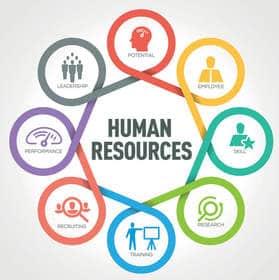Employee performance and engagement increases when employees feel safe and supported. I don’t mean safe as in comfortable, but rather that employees feel confident that their leader and team has their back and they know where they stand. Simon Sinek says it best in his TedTalk – when employees don’t feel safe, they spend all of their energy protecting themselves. They don’t take healthy risks, they do the bare minimum, they blame others when things go wrong, and they don’t share credit.
When employees feel safe within their team, they expend their energy in positive ways. They don’t have to worry about themselves and where they stand, which frees them to do what’s in the best interest of the organization and team. They look out for their co-workers and clients, they own up to their mistakes, and they share credit and recognition with others.
I often run into leaders who believe it is Human Resources’ job to make employees feel safe at work. HR has a role to play in ensuring organizational health and safety but ultimately personal and emotional safety and professional health comes from knowing your direct leader cares and has your back. It’s not enough to know that the nice HR team down the hall has your back. Approximately 84% of how people feel about their organization is driven by their relationship with their direct leader. HR’s role is to hold leaders accountable to lead and ensure that leaders have the support they need to do so effectively.
1. Hire stellar people leaders who understand their role and take the safety and engagement of employees seriously. You are responsible for hiring and developing leaders who understand that people leadership is their job – that leading people isn’t something they can push to the side of their desk for when they have time. They need to recognize it as their top priority.2. Ensure that leaders have the leadership training and tools that allow them to lead effectively.
3. Ensure that leadership roles are structured in a way that allows leaders to focus on leading their team and that they are not entirely bogged down by day to day deliverables.
4. Coach leaders to handle the people and team issues themselves instead of HR solving these problems for them.
5. Hold leaders accountable when they aren’t leading.
LEADER’s ROLE – To make employees feel safe, Great Leaders must:
1. Be proactively transparent.
Share as much information with your team as you can. Don’t be afraid of over-communicating through times of change or stress. The more your team knows, the more they trust you and feel that you trust them.
2. Invest in one-on-one time with each member of your team.
Great teams are built by leading individuals. Be sure to check in with each member of your team regularly. Even if an employee doesn’t have much to share in one-on-ones initially, give them time to adjust and figure out how these sessions will work best for them. It may take a few meetings before they are comfortable being more open about the challenges they are having, sharing successes or letting you know what they need from you as a leader.
3. Say thank you.
A great way to make sure employees know where they stand is to give regular and positive feedback. When employees receive recognition, they feel valued and safe. They will realize that you, their leader, are paying attention to their good work (not just the problem areas!).
4. Ask questions and don’t make assumptions.
One of the biggest mistakes we can make as a leader is assuming someone isn’t motivated and that they didn’t meet an expectation because they don’t care. Check your assumptions at the door and be sure to start every conversation that involves addressing a mistake or performance issue with an open ended ‘what’ question. This approach shows that you are open to hearing the employee and that you haven’t made any assumptions about who they are and how motivated they are.
5. Be open and collaborative.
Employees feel safe when they feel like they are a part of something. Be sure to get feedback from your team on key initiatives and even on the small things when you can. Everyone likes being leveraged as an expert, so be sure to use the expertise of your team by asking the group or individuals for their thoughts and feedback along the way.
6. Have the tough conversations.
Creating a safe environment isn’t about avoiding conflict. In fact, when there is a performance issue, part of making an employee feel safe is dealing with it early and before it becomes a bigger issue. Making employees feel safe also means dealing with employee conduct or behaviours that are negatively impacting the safety of the rest of the team.
The idea of safety is not about being ‘soft’; it’s about intentionally communicating when things are going well and when they aren’t, so that employees know where they stand, what the expectation is, and how you are going to support them in getting where they need to be.
The bottom line: employees are more effective and have increased performance when they feel safe. A leader may get short term bursts of great work by using fear tactics, but those tactics don’t foster long term commitment or energy. Employees need to feel a sense of safety to have the freedom to try creative solutions, make mistakes, own up to their mistakes and be open and free with their recognition of others. This is how great leaders increase performance and engagement within their teams.
Check out Simon Sinek’s TedTalk here:
www.ted.com/talks/simon_sinek_why_good_leaders_make_you_feel_safe






